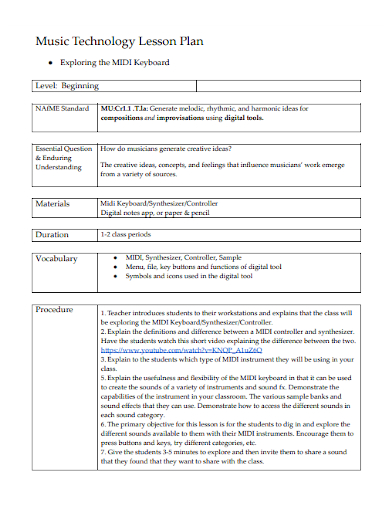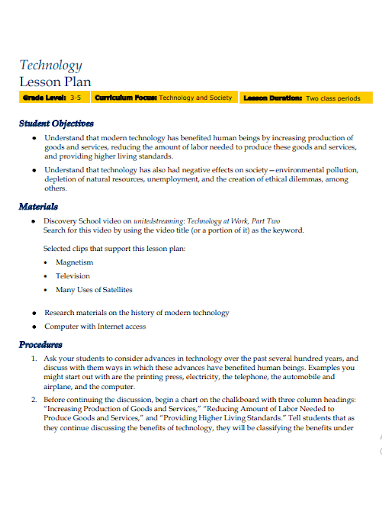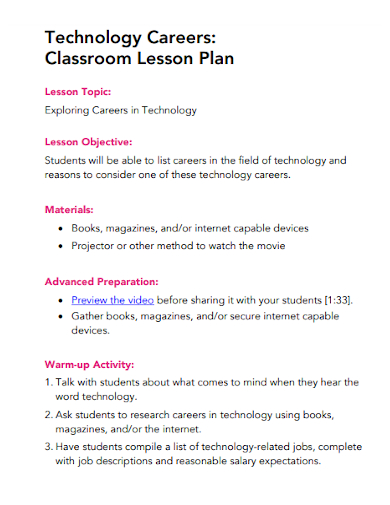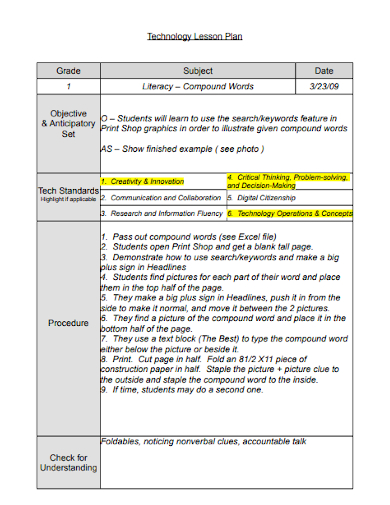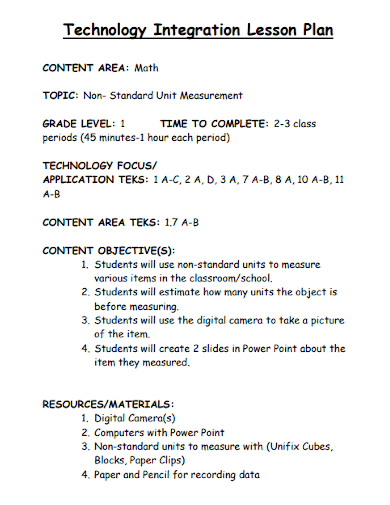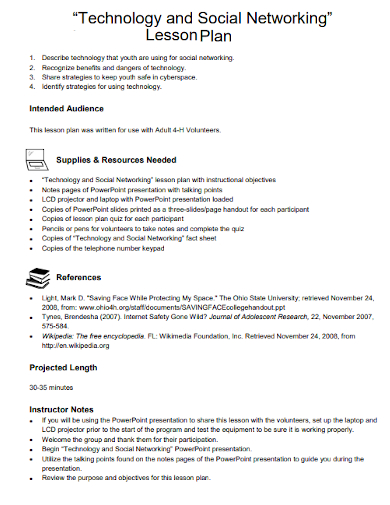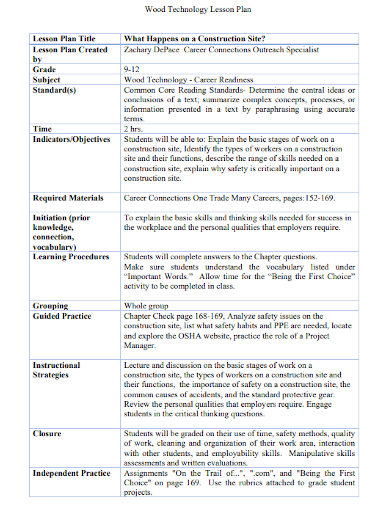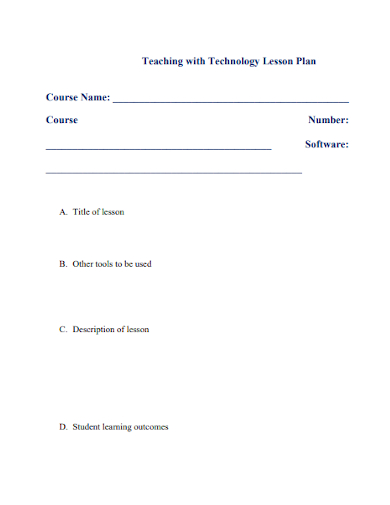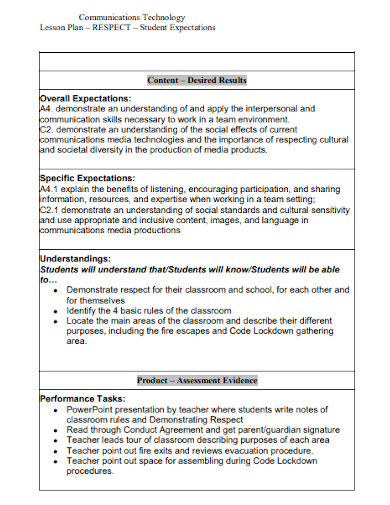Technology has changed the way people interact and communicate with one another, and current classrooms, homes, and offices are nothing like they were 20 or 30 years ago. Students today must prepare for a career where social media, television, video games, and other technology innovations are more prevalent than ever. Teachers can assist students prepare for the future professional world by incorporating technology into the classroom.
10+ Technology Lesson Plan Samples
If the prospect of fitting yet another thing into an already overburdened curriculum — and teaching day — seems onerous, the prospect of incorporating technology into lesson planning may be enough to push some teachers over the brink. However, the need to make new technologies as simple and familiar to pupils as pens and calculators will only rise. It is a critical task that all educators must accept, not just accept, but embrace. Here are seven ways teachers can use the Internet and other technologies to improve student learning in the classroom.
1. Free Technology Lesson Plan Template
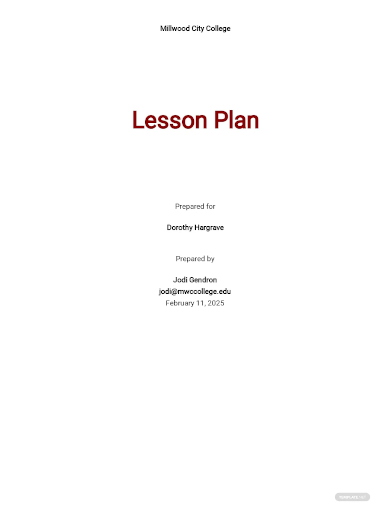
2. Music Technology Lesson Plan
3. Final Assignment Technology Lesson Plan
4. Sample Technology Lesson Plan
5. Technology Careers Classroom Lesson Plan
6. Basic Technology Lesson Plan
7. Technology Intergration Lesson Plan
8. Technology and Social Networking Lesson Plan
9. Wood Technology Lesson Plan
10. Teaching with Technology Lesson Plan
11. Communications Technology Lesson Plan
Reasons to Use Technology in Lesson Plans
- The amount of information available – Teachers and their students have access to almost unlimited knowledge when using the Internet. School projects are no longer limited to what can be found in textbooks at their local library. Students can learn more about a topic in considerably less time by using Google. Teachers can use the information available to students to push them and motivate them to learn more about subjects and master the material.
- Modern languages opportunities – Professionally, modern language abilities are incredibly valuable. One of the ways technology is used in education is to allow pupils to communicate with native speakers of that language. Students can hear the language, practice their speaking skills, and improve their general comprehension.
- The chance to learn geography, history, and culture – The ability to meet and communicate with students from different nations is a worthwhile experience in and of itself in a world that is increasingly defined by global trade and intercommunication. When students can connect with people from that country rather than merely learn about them in a textbook, geography, foreign history, languages, and cultures take on a whole new significance. Students can conduct interviews with other students to learn about their local customs and cultures.
- Access to new norms of education – It’s difficult for a teacher to provide each pupil individualized attention in large classrooms with disproportionate student-to-teacher ratios. While the Internet cannot replace personal connection, it does provide teachers with a wealth of resources to assist some students in grasping the topic. On the Internet, you can find study aids, interactive pictures, explanations, and videos.
- Individualized lessons – Students will not only be able to study using their preferred method of learning, but they will also be able to determine their own pace thanks to the Internet. Some pupils in every classroom learn stuff fast and become bored with repeated repetition. On the other hand, some pupils are having difficulty keeping up. Teachers can use technology to develop courses that allow fast learners to go further into the subject or study adjacent topics while giving slower learners more time to grasp the material.
- Adding new meaning to student projects – Students take pleasure in finding significance in their work. Previously, kids could only have their teacher and fellow students see their reports and projects, but now they can readily display their work online. They can produce items for other kids to utilize and receive feedback on their ideas from students all over the world. Students will be able to take pride in their work and find purpose in their projects as a result of this.
- Student collaboration opportunities – In a similar vein, students can work on projects with students from all around the world. They can collaborate with children from the next door school or from across the country. There is a wide range of technologies available, such as the new popularity of cloud technology, that will allow students to communicate and collaborate without ever having to meet in person.
FAQs
Why do you have to analyze the benefits?
You might be able to incorporate technology into one of your long-standing lectures, but you must first decide whether doing so will improve students’ overall performance. Schools have high expectations for their technology curricula, so educate yourself with them so that your lesson plans can satisfy them.
Are assessment tools necessary in creating a technology lesson plan?
While the process is still fresh in your mind, consider the abilities and knowledge that the students will be expected to demonstrate in their project. Make a rubric to create a system for evaluating students’ work depending on their performance. Determine the importance you’ll place on grammar, spelling, content, specialized technological skills, layout, and presentation. You explicitly lay out your expectations by presenting the rubric to the students before the project begins. There are numerous resources accessible online to assist you in creating an optimal rubric.
Technology allows teachers to provide opportunities for their students. They have unrestricted access to knowledge, and students are better prepared to enter the workforce as a result of incorporating technology into their educational experience.
Related Posts
FREE 7+ Fashion Business Plan Samples in PDF
FREE 10+ Sprint Planning Samples In MS Word | Google Docs | PDF
FREE 10+ Wedding Planning Samples in MS Word | Apple Pages | Powerpoint | PDF
FREE 9+ Monthly Study Planner Samples in PSD | Illustrator | InDesign | PDF
FREE 9+ Sample Curriculum Planning Templates in PDF | MS Word
FREE 10+ Teacher Development Plan Samples in MS Word | Google Docs | Apple Pages | PDF
FREE 10+ Basketball Practice Plan Samples in PDF
FREE 12+ School Business Plan Samples in PDF | MS Word | Apple Pages | Google Docs
FREE 7+ Client Strategic Plan Samples in PDF | MS Word
FREE 11+ Trucking Business Plan Templates in PDF | MS Word | Google Docs | Pages
FREE 7+ Small Hotel Business Plan Samples PDF | MS Word | Apple Pages | Google Docs
FREE 14+ Bakery Business Plans in MS Word | PDF | Google Docs | Pages
FREE 4+ Yearly Lesson Plan Samples in PDF
FREE 50+ Strategic Planning Samples in Google Docs | Pages | PDF | MS Word
FREE 10+ Construction Project Plan Samples in MS Word | Google Docs | Apple Pages | PDF

